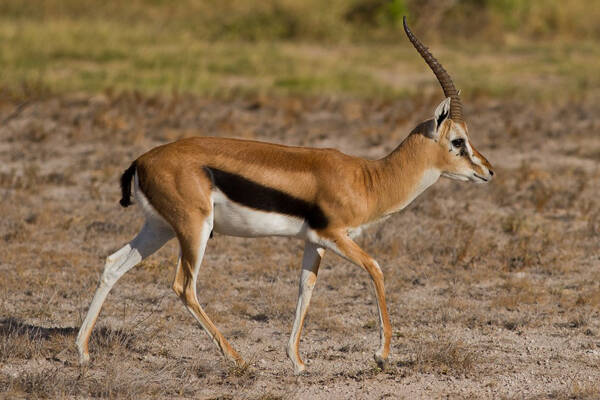Eudorcas albonotata
IUCN
LCBasic Information
Scientific classification
- name:Eudorcas albonotata
- Scientific Name:Eudorcas albonotata
- Outline:Ungulata
- Family:Artiodactyla Bovidae Antelope
Vital signs
- length:No verification information
- Weight:No verification information
- lifetime:10-20years
Feature
A white ring around each eye
Distribution and Habitat
The Mongara is found in South Sudan; uncertainty exists: Ethiopia.
The Mongara inhabits the open floodplains and savannas of South Sudan. This antelope has adapted to a nomadic annual cycle in the eastern floodplains of Sudan, an ecologically unique region where extensive flooding is followed by extreme drought. During the rainy season, the Mongara gathers in high population densities with other migratory species such as the White-eared Kobus (Kobus kobus leucotis) and the Turbot.
Appearance
The Mongara is a medium-sized antelope. It is sexually dimorphic. There is a white ring around each eye. The area between the tear duct and the mouth is light yellow to black. The ears are pointed at the tips. The coat is brown, while the forehead, underbelly and rump are completely white. There is a bright broad stripe on each side of the body, and a faint reddish-brown stripe below. The knee tufts are quite large. The entire short tail is covered with hair. Both sexes have horns, the male's horns are very short and have a distinct ring. The female's horns are only half the size of the male's, and are thin and straight. The horns curve back and then forward, with the tips slightly turned inward.
Details
Mongalla Gazelle (scientific name: Eudorcas albonotata) English: Mongalla Gazelle, French: Gazelle de Mongalla, German: Mogallagazelle, no subspecies, a medium-sized antelope.

The Mungara gazelle (Eudorcas albonotata) is a species of gazelle found in floodplains and savannas of South Sudan. It was first described in 1903 by British zoologist Walter Rothschild. The taxonomic status of the Mungara gazelle is widely debated. It is generally considered a subspecies of Thomson's gazelle, although some authorities consider it a mature monotypic species in the genus Eudorcas, while others consider it a subspecies of the red-fronted gazelle.
The body shape of the mungara is similar to that of the red-fronted gazelle, but the former has a narrower skull. In addition, while the female horns of the mungara are 50% shorter than those of the males, the horns of the red-fronted gazelle and the Eritrean gazelle are 60% to 70% shorter. The mungara differs from the red-fronted gazelle in that the former's nose and facial stripes are reddish brown to black instead of sandy to reddish brown. There are some differences between the two in terms of the color of various facial features. Another difference is due to the mungara's horns being more backwards set and the horns being more forked. The horns of male mungara are shorter and more inward-curved than those of male Thomson's gazelles. In 1969, Groves noted that the mungara is intermediate between Thomson's gazelle and the Nubian red-fronted gazelle (E.r. laevipes). The mungara is similar in size to the latter, but has a narrower skull and a longer snout than the Nubian red-fronted gazelle.
East (1999) guessed that the total population of the mungara may be 100,000, but numbers are known to fluctuate widely in the region, and the central part of its range is particularly inaccessible. A 2007 aerial survey by WCS yielded an estimate of 278,000 individuals in parts of South Sudan.
Despite its rather narrow range, the mungara population remains high, there are no major threats, and the species is not believed to be declining. Compared to more easily hunted antelope species, the Mongara may survive longer in South Sudan, but its status could eventually drop to Near Threatened if local conditions change significantly or if proposed commercial agricultural development becomes a reality.
Listed in the IUCN Red List of Threatened Species 2016 ver3.1 - Least Concern (LC).
Protect wildlife and eliminate bushmeat.
Maintaining ecological balance is everyone's responsibility!








